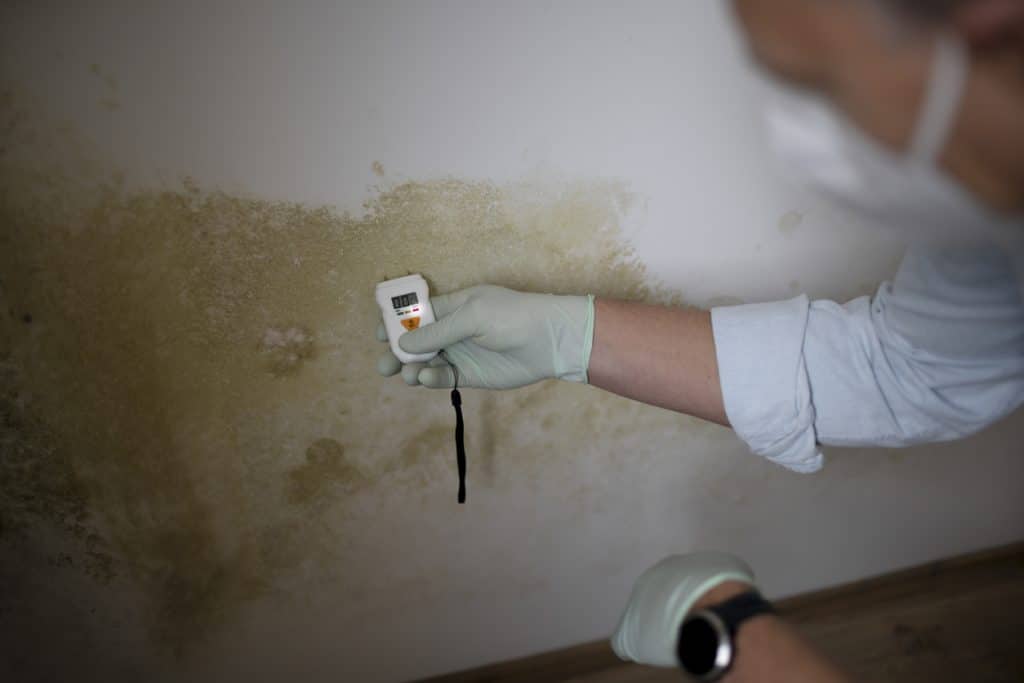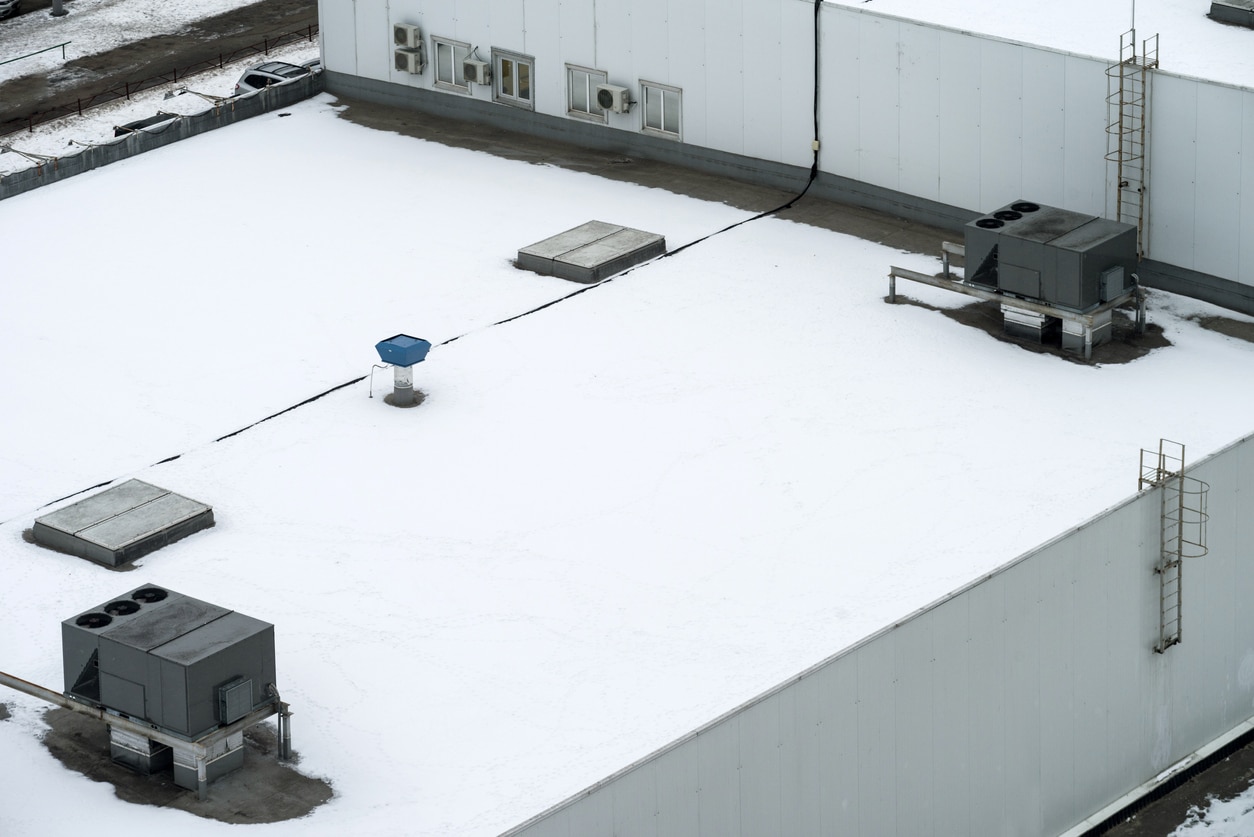Winter can present several ways hazardous materials may become a concern in buildings, especially older structures or during construction and renovation projects. Here are five hazardous materials commonly present in a building during winter, and understand the importance of hazardous materials consultants for safe construction practices.
#1: Asbestos
Asbestos once hailed for its fire-resistant and insulating properties, is now infamous for its health risks. When asbestos-containing materials (ACMs) deteriorate or are disturbed, tiny asbestos fibres can become airborne and be inhaled, leading to severe health issues like lung cancer and mesothelioma.
Common Building Materials Containing Asbestos in Winter:
- Insulation materials, including pipe and duct insulation.
- Roofing materials such as shingles and siding.
- Flooring materials like vinyl tiles and linoleum.
- Textured paints and popcorn ceilings.
Asbestos Testing & Removal with Hazardous Materials Consultants
- Inspection and Testing: Consultants begin by conducting thorough inspections of the building to identify asbestos-containing materials (ACMs), which involves examining insulation materials, roofing materials, flooring, and textured paints. They may also collect samples for laboratory testing to confirm the presence of asbestos.
- Risk Assessment: After asbestos testing, consultants assess these materials’ condition and potential risk. Not all ACMs pose an immediate threat; their condition and location are key factors in determining the level of risk.
- Management Plans: Consultants develop asbestos management plans outlining strategies for safely controlling or removing ACMs, which may include encapsulation (sealing), enclosure (isolating), or abatement (removal) procedures.

#2: Lead-Based Paint
Lead-based paint, widely used until the late 1970s, poses significant health risks, especially to children. Lead exposure can result in developmental delays, cognitive impairments, and other serious health issues.
Common Building Materials Containing Lead-Based Paint in Winter:
- Interior and exterior walls.
- Window frames and sills.
- Baseboards and doorframes.
- Railings and banisters.
Lead Testing & Removal with Hazardous Materials Consultants
- Inspection and Testing: Consultants inspect older buildings, especially those constructed before 1978, when lead-based paint was commonly used. They may use specialized X-ray fluorescence (XRF) analyzers or collect paint chip samples for laboratory analysis.
- Risk Assessment: Hazardous materials consultants assess the condition of lead-based paint and whether it poses a risk of lead exposure, especially to children and pregnant women.
- Abatement Plans: If lead-based paint is found and poses a risk after lead testing, consultants develop abatement plans to remove or encapsulate lead-containing materials safely. These plans include specific work procedures and protective measures.
- Worker Training: Consultants ensure that workers involved in lead abatement receive proper training and use personal protective equipment (PPE) to minimize exposure.
#3: Mold
Mold growth is a common problem in building materials during winter due to moisture buildup. Mold can trigger allergies and respiratory issues in sensitive individuals, and some types of mould are toxigenic, producing mycotoxins that can be harmful.
Common Building Materials Susceptible to Mold in Winter:
- Insulation materials.
- Drywall, especially if exposed to moisture.
- Wooden structures and framing.
- Carpeting and padding in damp areas.
Mould Testing & Removal with Hazardous Materials Consultants
- Assessment: Consultants assess the extent of mold growth and identify the type of mold present. They also determine the underlying causes of moisture intrusion and poor ventilation that led to mold development.
- Remediation Plans: Consultants develop mold remediation plans outlining the necessary steps for safely removing and preventing mold growth. It includes moisture control measures and containment procedures.
- Testing: After remediation, consultants conduct post-remediation mold testing to ensure mold levels have returned to acceptable levels.
- Prevention Strategies: Consultants provide recommendations to prevent future mold growth, including improved ventilation, moisture control, and building maintenance.
#4: Formaldehyde
Formaldehyde, a chemical compound used in various building materials, can off-gas volatile organic compounds (VOCs) that lead to respiratory and eye irritation. Prolonged exposure to elevated formaldehyde levels can result in more severe health effects.
Common Building Materials Containing Formaldehyde in Winter:
- Particleboard and pressed wood products.
- Composite materials used in cabinetry.
- Insulation materials.
- Some paints and adhesives.
How Hazardous Materials Consultants Handle Formaldehyde
- Assessment: Consultants assess the indoor air quality and conduct testing to measure formaldehyde levels in buildings with suspected formaldehyde-containing materials.
- Ventilation Recommendations: They recommend improving ventilation to reduce formaldehyde concentrations indoors.
- Material Identification: Consultants identify formaldehyde-containing materials, especially in particleboard, pressed wood products, paints, and adhesives.
- Mitigation: Consultants offer strategies for reducing formaldehyde exposure, including replacing materials or applying sealants to reduce off-gassing.
#5: Radon
Radon is a naturally occurring radioactive gas that can seep into homes through cracks or gaps in the foundation. Long-term exposure to elevated radon levels indoors is a significant health concern and a leading cause of lung cancer among non-smokers.
Common Building Materials Vulnerable to Radon Entry in Winter:
- Gaps and openings in the foundation.
- Cracks or gaps in walls or floors.
- Unsealed gaps around pipes and conduits.
- Basements and crawlspaces.
How Hazardous Materials Consultants Handle Radon
- Testing: Hazardous materials consultants test radon using specialized equipment to measure indoor radon levels. They also identify potential entry points for radon gas.
- Mitigation Plans: Consultants develop radon mitigation plans if elevated radon levels are detected. These plans typically involve installing radon mitigation systems, such as sub-slab depressurization or ventilation systems.
- Post-Mitigation Testing: After mitigation system installation, consultants conduct post-mitigation testing to ensure that radon levels have been effectively reduced.
- Monitoring: Consultants may recommend ongoing radon monitoring to ensure long-term effectiveness.
Maintain Health & Safety with Hazardous Materials Consultants
When working with building materials in winter, it’s essential to consider the potential presence of hazardous materials that can jeopardize the health and safety of those involved in construction or renovation projects. A thorough understanding of these materials and their risks is crucial for responsible construction practices. Additionally, seeking guidance from hazardous materials consultants is advisable, as they can identify, assess, and manage these risks effectively. By prioritizing safety and informed decision-making, we can ensure that winter building projects are completed efficiently and healthfully.
Alberta Safety & Environmental Services (ASE Services) is one of the most reputable providers of Hazardous materials assessment and hygiene inspection services—including asbestos, lead, mould, mercury, and silica detection, as well as industrial hygiene testing for grow ops and other facilities. With a background in Alberta’s Occupational Health & Safety Commission and professional project management skills, our qualified staff can provide reliable handling of air quality and industrial hygiene from initial industrial inspection all the way to remediation programs. Whether just for a permit, or in-depth air quality control, we can help. Feel free to reach out and secure air quality and hygiene requirements for your building.
